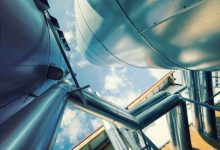The cost of electrolysers to create hydrogen are likely to fall by more than 70 per cent over the next decade – matching the recent dramatic cost falls of solar PV and battery storage – but it may still not be enough to provide Australia with a breakthrough in green hydrogen exports.
Many in Australia are looking to green hydrogen – the green meaning it is sourced from wind and solar power – as a potential long term replacement for coal and LNG exports as a cleaner and cheaper alternative to fuel the energy-hungry economies in Asia, and Japan and South Korea in particular.
But while the costs of electrolysers – the technology that users electricity to split water into hydrogen and oxygen – are tipped to fall by at least 70 per cent, and Australia enjoys a significant cost advantage thanks to its wind and solar resources, the heavy cost of transport and shipping means that other things have got to go its way to get a cost advantage of alternatives.
“The (green hydrogen) export story is still a challenging one,” McKinsey analyst Godart van Gendt told Reneweconomy in an interview ahead of a presentation at the Australia Energy Week conference in Melbourne. “The fact that you have got costs coming down in Australia … does not mean that export market opens up.”

Here’s the problem in detail, as identified by van Gendt. This graph above shows why electrolyser costs will fall by around 70 per cent or more over the next decade – from $A1,700/kw installed to around $A600/kW installed, thanks to improved design, large scale production and improvements in those production lines.
These are the same factors, along with increased efficiency, that drove the cost reductions in solar, wind energy and battery storage. After 2030, McKinsey expects another 30 per cent reduction as the second wave of innovations take costs down to around $A400/kW.
That’s great. But as this next graph shows, every country will be able to access that same electrolyser technology, and somehow Australia has to overcome the shipping and handling costs that are nearly the same as production costs.

Where Australia’s advantage will come is in its cheap and clean renewables potential. Proponents of wind and solar plants on a massive scale – and we are talking about multi gigawatt scale deployments – talk of the cost of solar falling to around $20/MWh to $10/MWh.
Van Gendt is not sure about that figure, but says that Australia will need a price of around $20/MWh for the electricity it uses to make hydrogen from the electrolysers to make it competitive and overcome the crippling costs of shipping and handling, nearly as much as the original production.
So, to match the delivered cost of hydrogen from electrolysis in Japan, Australia needs to produce electricity at around one third of the cost of its major presumed customer, or at least maintain a $40/MWh differential.

Van Gendt says Australia may be able to do that with wind and solar alone, or at least by only using the electrolyser at times when there is a surplus, and prices are cheap and average $20/MWh or below.
Interestingly, if the electrolyser is only used at 50 per cent capacity, and focuses on times of cheap energy, then the delivered cost is much cheaper than if it runs all the time and beats its major competition.
That competition comes from SMR hydrogen technology – steam methane reforming, which is based around using fossil fuel generation, either coal or gas, and has no emissions benefits. In fact, it might make things worse because of the extra energy required.
Van Gendt says to compete against SMR without carbon capture, or even a Japanese electrolyser with relatively low fuel costs, a hefty carbon price will be needed to to help Australian exports remain competitive.

And to ensure that the cost of electrolysers do come down as predicted, and for Australia to enjoy those same price reductions and industry expertise, it will likely have to continue to expand its own electrolyser projects.
So far, about 135MW of projects have been identified out to 2025 in Australia, and a further 550MW elsewhere, but more will be needed to drive those cost reductions.










